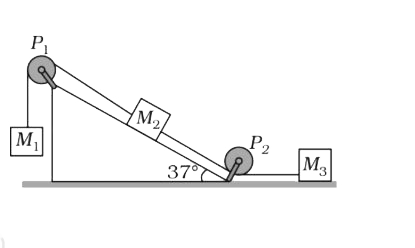For precipitate formation formation reaction
For precipitate dissolution reaction
For precipitate exchange reaction
For no reaction
The correct Answer is:B
To analyze the given reaction and determine its type, we can follow these steps:
Step 1: Identify the Reactants and Products
The reaction provided is:
Zn(OH)2+2NaOH→Na2ZnO2+2H2O
Here, the reactants are zinc hydroxide (Zn(OH)2) and sodium hydroxide (NaOH). The products formed are sodium zincate (Na2ZnO2) and water (H2O).
Step 2: Analyze the Reactants
Zinc hydroxide (Zn(OH)2) is known to be a precipitate. It is insoluble in water and typically forms as a solid in reactions.
Step 3: Analyze the Products
In the products, sodium zincate (Na2ZnO2) is soluble in water, and water (H2O) is also a liquid. There is no solid precipitate formed in the products.
Step 4: Determine the Type of Reaction
Since we started with a precipitate (zinc hydroxide) and ended up with soluble products (sodium zincate and water), this indicates that the reaction involves the dissolution of the precipitate.
Conclusion
This reaction can be classified as a precipitate dissolution reaction because a solid precipitate (Zn(OH)₂) is dissolved to form soluble products (Na₂ZnO₂ and H₂O).
---
The reaction provided is:
Zn(OH)2+2NaOH→Na2ZnO2+2H2O
Zinc hydroxide (Zn(OH)2) is known to be a precipitate. It is insoluble in water and typically forms as a solid in reactions.
In the products, sodium zincate (Na2ZnO2) is soluble in water, and water (H2O) is also a liquid. There is no solid precipitate formed in the products.
Since we started with a precipitate (zinc hydroxide) and ended up with soluble products (sodium zincate and water), this indicates that the reaction involves the dissolution of the precipitate.
This reaction can be classified as a precipitate dissolution reaction because a solid precipitate (Zn(OH)₂) is dissolved to form soluble products (Na₂ZnO₂ and H₂O).
Topper's Solved these Questions
- TYPES OF REACTIONSBOOK - VK JAISWAL ENGLISHCHAPTER - TYPES OF REACTIONSEXERCISE - LEVEL 2
196 Videos
- TYPES OF REACTIONSBOOK - VK JAISWAL ENGLISHCHAPTER - TYPES OF REACTIONSEXERCISE - LEVEL 3
44 Videos
- s-BLOCK ELEMENTSBOOK - VK JAISWAL ENGLISHCHAPTER - s-BLOCK ELEMENTSEXERCISE - SUBJECTIVE PROBLEMS
2 Videos
Similar Questions
2NaOH+Zn(OH)2⏐↓→Na2ZnO2+2H2O
View SolutionMasses M1,M2 and M3 are connected by strings of negligible mass which pass over massless and frictionless pulleys P1 and P2 as shown in the figure. The masses move such that the portion of the string betweenP1 and P2 is parallel to the inclined plane and the portion of the string between P2 and M3 is horizontal. The masses M2 and M3 are 4.0 kg each and the coefficient of kinetic friction between both the masses and the surfaces is 0.25. The inclined plane makes an angle of 37° with the horizontal. If the mass M1 moves downwards with a uniform velocity, find
(i) the mass of M1 in kg
(ii) the tension in the horizontal portion of the string in Newton

View SolutionIn the reactions
HCl+NaOH→NaCl+H2O+xcal. > H_(2)SO_(4) + 2NaOH rightarrow Na_(2)SO_(4) + 2 H_(2)O + y cal.
View SolutionMg(OH)2⏐↓+2HCl→MgCl2+2H2O
View SolutionMg(OH)2⏐↓+2HCl→MgCl2+2H2O
View SolutionS8+NaOH→Na2S+Na2S2O3
View SolutionS8+NaOH→Na2S+Na2S2O3
View SolutionBalance the following equation:
ZnO+NaOH→Na2ZnO2+H2O
View Solution2BaCrO4↓+4HCl→2BaCl2+H2Cr2+H2O
View SolutionBaC2O4⏐↓+2AcOH→Ba(AcO)2+H2C2O4
View Solution
